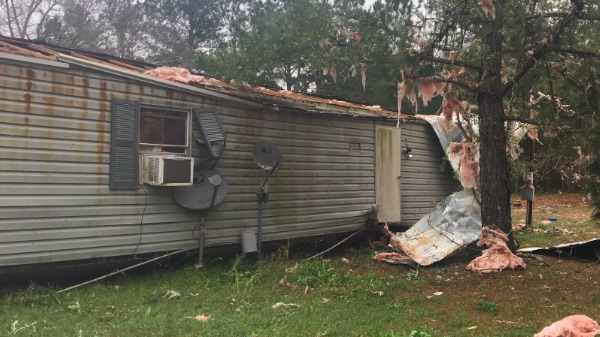One benefit of mobile homes is that they tend to be relatively affordable. But these structures can be especially vulnerable during severe weather. Many of the 23 people died in last week’s tornado in Lee County lived in mobile homes. David Roueche grew up in one and he wants to make them safer. He’s a civil engineering professor at Auburn University. WBHM’s Andrew Yeager spoke to Roueche via Skype.
Interview Highlights
Why mobile homes tend to fare poorly:
“They tend to be lighter structures. In a typical conventional home you’ll have, say, two-by-four wall framing. In a mobile home, that wall framing is maybe two-by-three or smaller. You also have where mobile homes tend to be not on a permanent foundation. So they are resting on piers and they have straps that are then just anchored to the ground … We find a lot of variability in how those are actually installed, how many they have within a mobile home, how tight the straps are. It just makes these more vulnerable structures overall.”
Safety versus affordability:
“My observation seems to be what drives the injuries and fatalities is when you have mobile homes overturned, get lifted and actually get tossed in the air. I would like to see more anchors. I would like to see longer anchors. But I was going to counter that by saying that I do fully understand mobile, manufactured homes they’re intended to be affordable housing. And so the more you add material and anchorage and so on, that is nominally going to increase the costs and I understand that. But at the same time we have to protect life safety.”
Precautions mobile home owners can take:
“The easiest one to look at is again going back to the anchorage. Being able to look underneath your home and being able to count how many anchors do I have. Are there straps that go into the steel chassis for each one of them? How loose are they? Is the anchor itself loose in the ground or is it tight? That’s going to be the first thing to check in an existing manufactured home.”

